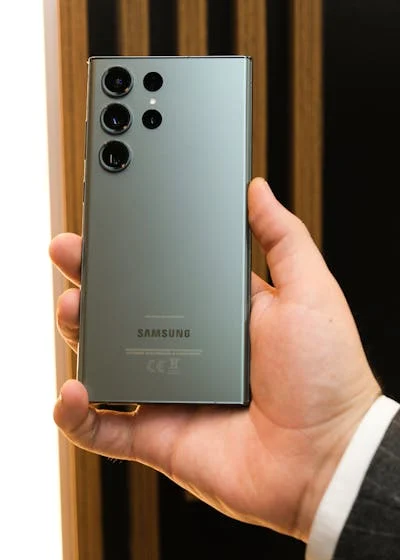
The Evolution of Xiaomi Phones: A Timeline of Innovation
Xiaomi, a brand once known for its budget smartphones, has rapidly evolved into a global tech giant. From its first device to the high-end Xiaomi 14 series, the company has revolutionized the smartphone industry. In this article, we will explore the evolution of Xiaomi phones, their major milestones, and the latest models, including the Xiaomi 13T Pro and Xiaomi 14. We will also discuss Xiaomi phone prices and provide a Xiaomi phone list with series explained.
The Beginnings of Xiaomi (2011-2013)
Xiaomi was founded in 2010 by Lei Jun with a vision to provide high-quality smartphones at affordable prices. The company initially focused on developing MIUI, a custom Android skin that gained popularity due to its user-friendly interface and frequent updates. Xiaomi’s first smartphone, the Xiaomi Mi 1, was launched in 2011 and featured MIUI pre-installed, setting the stage for future success.
Notable Models:
- Xiaomi Mi 1 (2011): The company’s first smartphone with MIUI.
- Xiaomi Mi 2 (2012): Introduced a powerful Snapdragon S4 Pro processor, making it a competitor in the flagship market.
- Xiaomi Mi 3 (2013): Featured a premium design and top-tier specs, boosting Xiaomi’s reputation.
Expansion and Global Reach (2014-2016)
By 2014, Xiaomi had become the largest smartphone brand in China, surpassing competitors like Huawei and Apple. The company expanded to international markets, particularly India, which became a crucial market for its success. The Redmi series was introduced in this phase, providing budget-friendly options with strong performance.
Key Developments:
- Redmi 1S (2014): An affordable smartphone that brought premium features to budget users.
- Xiaomi Mi 4 (2014): Improved build quality with a stainless-steel frame.
- Xiaomi Mi Note (2015): Entered the premium segment with a large display and high-end specs.
- Redmi Note 3 (2016): One of the best-selling smartphones of its time, offering a metal body, large battery, and fingerprint sensor.
Innovation and Premium Offerings (2017-2019)
As Xiaomi expanded further, it began focusing on high-end innovation. The Mi Mix series was introduced, featuring some of the first bezel-less designs in the smartphone industry. Xiaomi also started incorporating AI-powered cameras and flagship processors into its devices.
Major Highlights:
- Mi Mix (2016): One of the first phones with a near bezel-less display.
- Redmi Note 5 Pro (2018): Introduced AI dual cameras and became one of the best-selling phones in India.
- Pocophone F1 (2018): A sub-brand of Xiaomi that delivered flagship-level performance at a mid-range price.
- Mi 9 (2019): Featured a triple-camera setup with AI enhancements, wireless charging, and an under-display fingerprint sensor.
Rise of the Flagship Killers (2020-2022)
During this period, Xiaomi strengthened its position as a leading global smartphone manufacturer. The Xiaomi Mi 10 series and Xiaomi 11 series were direct competitors to Samsung’s Galaxy S series and Apple’s iPhones. Xiaomi also launched MIUI 12 and MIUI 13, improving user experience and privacy features.
Significant Launches:
- Xiaomi Mi 10 (2020): The first Xiaomi phone to feature a 108MP camera and 5G support.
- Xiaomi Mi 11 Ultra (2021): Introduced a secondary display on the back and a powerful camera system.
- Xiaomi 12 Pro (2022): Brought an LTPO AMOLED display, improved night photography, and faster charging.
Xiaomi’s Latest Series (2023-2024)
Xiaomi continues to innovate, pushing the boundaries of technology. The latest Xiaomi 13T Pro and Xiaomi 14 offer high-end specifications and premium designs, further cementing Xiaomi’s reputation as an industry leader.
Latest Flagships:
- Xiaomi 13T Pro: Powered by MediaTek Dimensity 9200+, featuring a high-refresh-rate OLED display, advanced cooling technology, and fast 120W charging.
- Xiaomi 14: Equipped with the Snapdragon 8 Gen 3 processor, Leica-powered cameras, and an upgraded MIUI experience.
- Xiaomi 13 Pro: Offers a Leica-powered camera system, a ceramic back, and fast 120W wired charging.
Xiaomi Series Explained: Understanding the Lineup
Xiaomi has a diverse range of smartphones catering to different market segments:
- Mi Series (Now Xiaomi Series): Flagship phones competing with Samsung Galaxy and Apple iPhone models.
- Redmi Series: Budget-friendly smartphones with reliable performance.
- Redmi Note Series: Mid-range devices offering flagship-like features at an affordable price.
- Poco Series: A sub-brand targeting gamers and power users with flagship-level specs at lower prices.
- Mix Series: Innovative design-focused smartphones with cutting-edge technology.
Xiaomi Phone Prices and Market Position
Xiaomi maintains competitive pricing across its product range:
- Budget Phones (Redmi Series): $100 – $300
- Mid-Range Phones (Redmi Note & Poco Series): $300 – $600
- Flagships (Xiaomi Series & Mix Series): $700 – $1200
Conclusion
The evolution of Xiaomi phones highlights the company’s journey from a budget-friendly smartphone maker to a global tech powerhouse. Xiaomi’s innovation in design, performance, and affordability has made it a strong competitor in the market. Whether you are looking for an entry-level device or a premium flagship like the Xiaomi 14, Xiaomi offers something for everyone.
With continuous advancements in AI, camera technology, and software experience, Xiaomi is poised to lead the smartphone industry into the future. Stay updated with the latest Xiaomi releases and find the best Xiaomi phone prices in your region!
